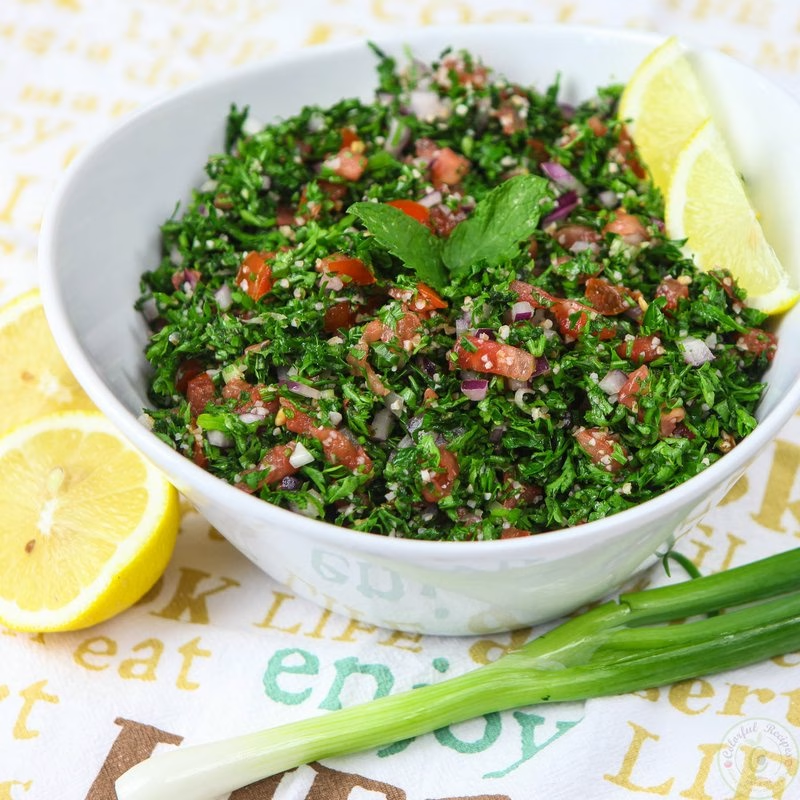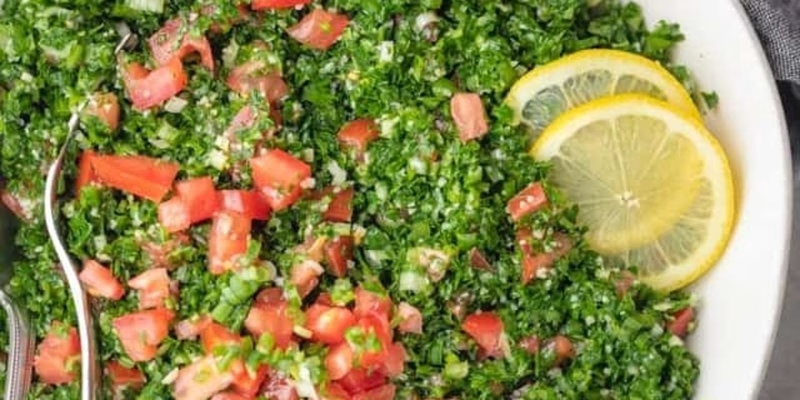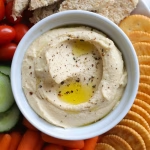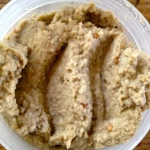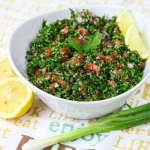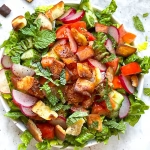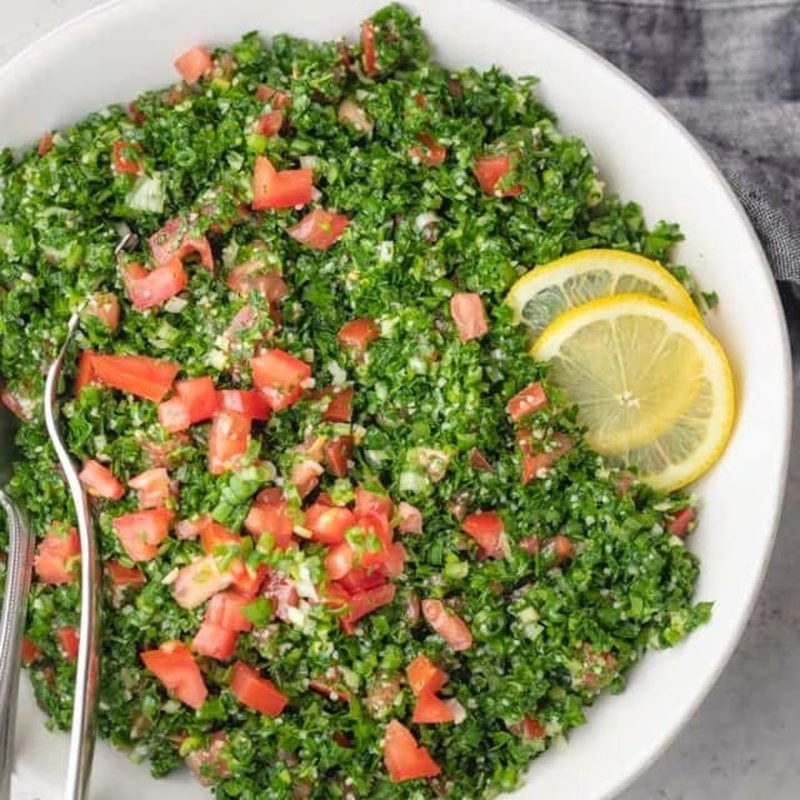
Introduction
Lebanese cuisine is a celebration of flavors, and few dishes embody this spirit as vibrantly as Labanese Kafta Wa Tabbouleh. This delectable meal combines savory grilled meat patties, known as kafta, with a refreshing salad called tabbouleh, making it a well-rounded and satisfying dish. Originating from the Mediterranean region, kafta is a beloved staple in Lebanese households, often prepared for family gatherings and special occasions. The harmony of the aromatic spices in the kafta and the crisp, herbaceous notes of the tabbouleh offer a delightful contrast that will leave your taste buds dancing.
In this article, you will learn how to make Labanese Kafta Wa Tabbouleh at home. This includes the essential ingredients, detailed cooking steps, pro tips for perfecting your dish, and nutritional information for those mindful of their diet. Whether you’re a seasoned cook or a novice in the kitchen, this recipe will guide you through creating an authentic Lebanese meal that’s sure to impress.
Ingredients
| Ingredient | Measurement | Description |
|---|---|---|
| Ground Lamb or Beef | 500g | Ground lamb or beef adds richness to the kafta, providing the essential protein base for this delicious dish. |
| Onion | 1 medium, finely chopped | A finely chopped onion imparts sweetness and depth to the kafta mix, enhancing its overall flavor profile. |
| Fresh Parsley | 1 bunch, chopped | Chopped parsley brightens the tabbouleh with its vibrant color and fresh flavor, making it a refreshing complement to the kafta. |
| Tomatoes | 2 medium, diced | Fresh tomatoes provide a juicy texture and acidity to the tabbouleh, balancing the richness of the kafta. |
| Bulgur Wheat | 1/2 cup | Bulgur is a staple in tabbouleh, offering a hearty base that absorbs flavors while adding nutritious fiber. |
| Mint Leaves | 1/4 cup, chopped | Fresh mint leaves add a refreshing burst of flavor to the tabbouleh, enhancing its aromatic profile. |
| Lemon Juice | 3 tablespoons | Lemon juice provides acidity, brightening the dish while marrying the flavors of the kafta and tabbouleh. |
| Olive Oil | 3 tablespoons | High-quality olive oil enriches the salad and meat, adding a smooth finish to the dish. |
| Allspice | 1 teaspoon | Allspice contributes warmth and complexity to the kafta, enhancing its traditional Lebanese flavor. |
| Salt and Pepper | To taste | Simple seasoning of salt and pepper is crucial for highlighting the ingredients’ flavors. |
Step-by-Step Instructions
- Prepare the Ingredients: Start by washing and finely chopping the parsley, mint, and tomatoes for the tabbouleh. Set aside. In a large bowl, combine the ground lamb or beef with chopped onions, allspice, salt, and pepper for the kafta. Ensure even mixing to create a consistent flavor.
- Soak the Bulgur: Rinse the bulgur under cold water and then soak it in warm water for about 15 minutes. This softens the grains and prepares them for incorporating into the tabbouleh.
- Make the Tabbouleh: Once the bulgur is softened, drain any excess water. In a bowl, combine the bulgur with diced tomatoes, chopped parsley, mint leaves, lemon juice, olive oil, salt, and pepper. Mix well to combine, allowing the flavors to meld together.
- Shape the Kafta: With clean hands, shape the meat mixture into oval or cylindrical patties. Aim for uniform thickness, as this ensures even cooking and a pleasing presentation.
- Grill the Kafta: Preheat your grill or skillet over medium heat. Lightly oil the grate or pan to prevent sticking. Cook the kafta for about 5-7 minutes on each side, or until browned and cooked through. The internal temperature should reach 75°C (165°F).
- Serve and Enjoy: Once cooked, arrange the kafta on a serving platter alongside the tabbouleh. You can garnish with extra mint or parsley for a fresh touch. Serve warm, and don’t forget to enjoy with pita bread or a refreshing yogurt dip!
Pro Tips
- Meat Selection: Try using a mix of ground lamb and beef for a unique flavor; lamb adds richness, while beef balances it out.
- Chill the Tabbouleh: Let the tabbouleh sit in the fridge for at least 30 minutes before serving. This enhances the flavors and provides a refreshing chill.
- Experiment with Spices: Feel free to experiment with spices like cumin or cinnamon in the kafta mix for a personalized touch!
- Use Fresh Herbs: Always opt for fresh herbs rather than dried ones to get the best flavor in your tabbouleh.
- Grilling Option: If you have access to an outdoor grill, grilling the kafta over charcoal adds a delicious smoky flavor that elevates the dish.
Nutritional Information
| Nutrient | Per Serving |
|---|---|
| Calories | 450 |
| Protein | 30g |
| Carbohydrates | 37g |
| Saturated Fats | 5g |
| Fiber | 6g |
| Cholesterol | 80mg |
| Sugars | 3g |
| Total Fat | 25g |
FAQs
What is the best way to store Labanese Kafta Wa Tabbouleh?
Store leftovers in an airtight container in the refrigerator for up to 3 days. Reheat the kafta gently to maintain its texture.
Can Labanese Kafta Wa Tabbouleh be made vegan or gluten-free?
Yes, you can substitute the meat with a mix of mushrooms and lentils for a vegan version. For gluten-free, skip the bulgur and use quinoa instead.
What are the best side dishes to serve with Labanese Kafta Wa Tabbouleh?
Pair with hummus, baba ganoush, or stuffed grape leaves. A side of yogurt dip complements the meal beautifully.
How long does it take to prepare Labanese Kafta Wa Tabbouleh?
Preparation takes about 30 minutes, and cooking time is roughly 15-20 minutes, making the entire process around an hour.
Can I freeze Labanese Kafta Wa Tabbouleh for later?
Yes, you can freeze the kafta patties uncooked for up to 3 months. Thaw them before grilling. The tabbouleh is best enjoyed fresh, so it’s not recommended to freeze it.
Is Labanese Kafta Wa Tabbouleh healthy?
Absolutely! This dish is packed with protein, healthy fats, and fresh vegetables, making it a nutritious choice that’s also delicious.
What variations of Labanese Kafta Wa Tabbouleh are popular?
Some variations include adding pomegranate seeds to tabbouleh for sweetness, or using different types of minced meat like chicken or turkey for the kafta.
Can I use dried herbs instead of fresh for tabbouleh?
While you can use dried herbs, fresh herbs are preferred for their vibrant flavor. However, if dried is all you have, reduce the quantity as it can be more potent.
